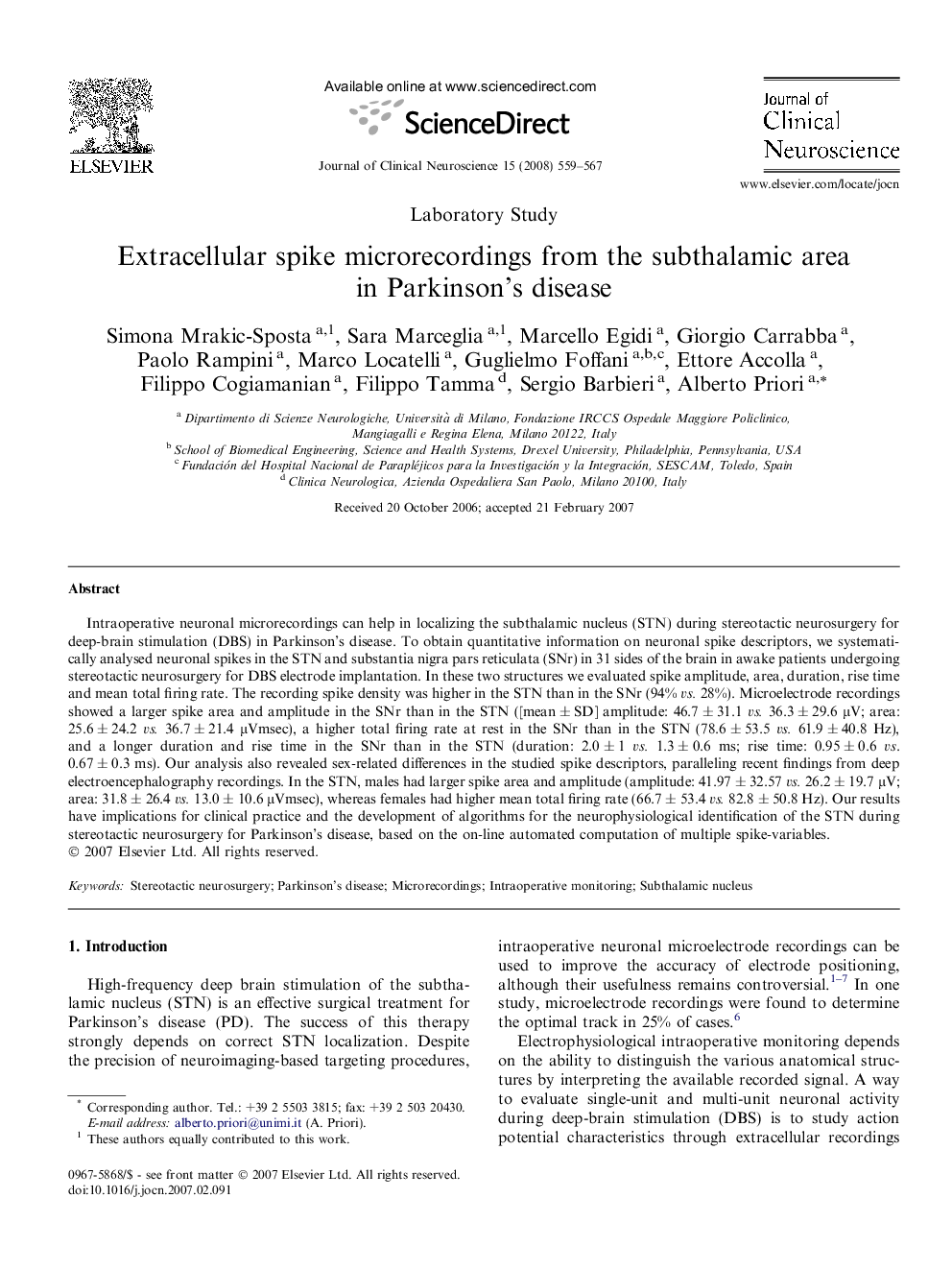| Article ID | Journal | Published Year | Pages | File Type |
|---|---|---|---|---|
| 3062024 | Journal of Clinical Neuroscience | 2008 | 9 Pages |
Intraoperative neuronal microrecordings can help in localizing the subthalamic nucleus (STN) during stereotactic neurosurgery for deep-brain stimulation (DBS) in Parkinson’s disease. To obtain quantitative information on neuronal spike descriptors, we systematically analysed neuronal spikes in the STN and substantia nigra pars reticulata (SNr) in 31 sides of the brain in awake patients undergoing stereotactic neurosurgery for DBS electrode implantation. In these two structures we evaluated spike amplitude, area, duration, rise time and mean total firing rate. The recording spike density was higher in the STN than in the SNr (94% vs. 28%). Microelectrode recordings showed a larger spike area and amplitude in the SNr than in the STN ([mean ± SD] amplitude: 46.7 ± 31.1 vs. 36.3 ± 29.6 μV; area: 25.6 ± 24.2 vs. 36.7 ± 21.4 μVmsec), a higher total firing rate at rest in the SNr than in the STN (78.6 ± 53.5 vs. 61.9 ± 40.8 Hz), and a longer duration and rise time in the SNr than in the STN (duration: 2.0 ± 1 vs. 1.3 ± 0.6 ms; rise time: 0.95 ± 0.6 vs. 0.67 ± 0.3 ms). Our analysis also revealed sex-related differences in the studied spike descriptors, paralleling recent findings from deep electroencephalography recordings. In the STN, males had larger spike area and amplitude (amplitude: 41.97 ± 32.57 vs. 26.2 ± 19.7 μV; area: 31.8 ± 26.4 vs. 13.0 ± 10.6 μVmsec), whereas females had higher mean total firing rate (66.7 ± 53.4 vs. 82.8 ± 50.8 Hz). Our results have implications for clinical practice and the development of algorithms for the neurophysiological identification of the STN during stereotactic neurosurgery for Parkinson’s disease, based on the on-line automated computation of multiple spike-variables.
